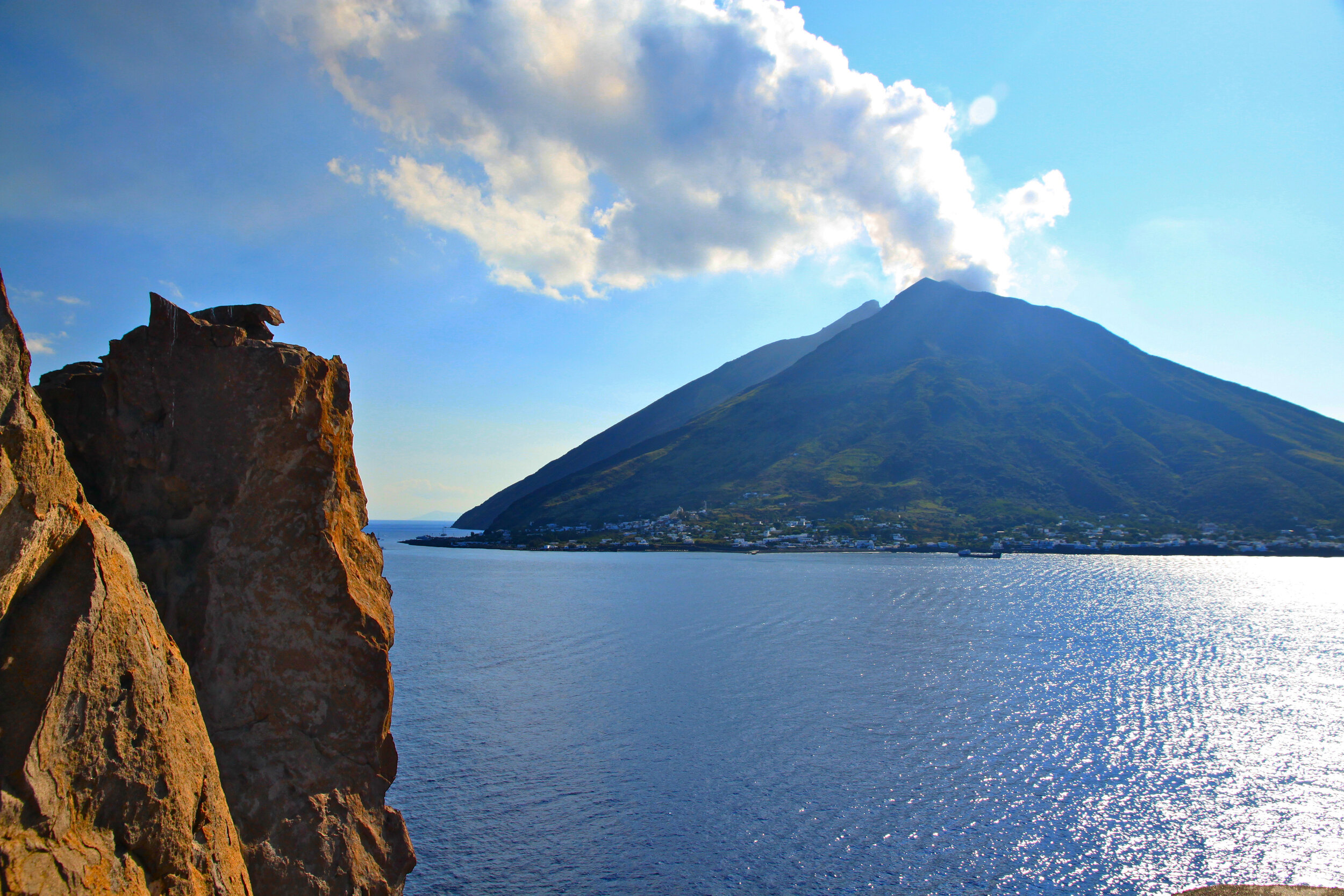
The Aeolian Islands
Since ancient times, these islands have been inhabited by Bronze Age settlers, Greeks, Romans, Normans, Arabs and the Spanish under the Bourbon kings. Each have left their mark and their legacy can be explored at various archeological sites and museums as well as experienced through the local Aeolian cuisine. Here is a tiny overview to whet your curiosity!
The fastest way to get to the Aeolian Islands is to fly directly to Catania International Airport. Many international airlines don’t fly directly there so you may have to travel to Rome and then board a connecting flight to Catania. Either way you will then need to board a bus to the port of Milazzo and then a hydrofoil to the islands. It’s a little bit of rigmarole but entirely worth it!
Though the archipelago shares common characteristics, each island heralds its own identity.
The Castello was built on the site of the first Neolithic settlement established on Lipari
Lipari is the largest and governs the archipelago excluding Salina which is self-governing. It is the commercial heart of the islands and home to Italy’s most important archeological museum, the Museo Archeologico Regionale Eoliano.
It is also home to the Castello and its current appearance derives from the reconstruction, commissioned by the Spaniard Charles V, around 1560. This reconstruction became necessary following the attack of the Tunisian pirate Barbarossa who in 1544 had conquered and destroyed the city, deporting part of the inhabitants as slaves.
The Spanish walls have incorporated the previous Norman towers, dating back to the 12th century. Within these walls, are the ruins of a Roman settlement as well as a Greek amphitheatre dating back to 4BC.
Vineyards in Malfa, Salina
The port of Santa Marina Salina
Salina is the greenest island renown for its vineyards and production of the sweet-passito style wine, Malvasia. The main entry to the island is via the port of Santa Marina Salina which was established by Venetian traders in the 16th century.
Scaling to the crater of Vulcano
The healing waters of the volcanic mud baths
On Vulcano, tourists scale the hissing crater of its volcano and seek the healing promise of the volcanic mud baths. Stromboli attracts tourists from around the world to experience the frequent eruptions of ‘Iddu’ from the safety of a touring boat or by taking the two-hour trek to its peak.
A view of Stromboli from the top of Strombolicchio
Typical Strombolian architecture
Panarea has become known as the ‘glamour’ island attracting celebrities from around the globe. Though the Northern Italians prefer the solitude of Alicudi which can be enjoyed by climbing its thousands of stone steps before returning to dive in its divine waters.
Panarea attracts the rich and famous with visits by Natalie Portman, Katy Perry and the like
Alicudi is the steepest island but the view is worth the exercise!
And finally, there is Filicudi which houses the oldest Bronze Age settlement dating from 3600BC. Filicudi was also the first island to be emerged from the waters in the eruption that 1 million years ago created the Aeolian Islands.
The prehistoric village of Capo Graziano is situated on the high ground of Filicudi’s peninsula
The stone walls of the settlement huts at Capo Graziano















